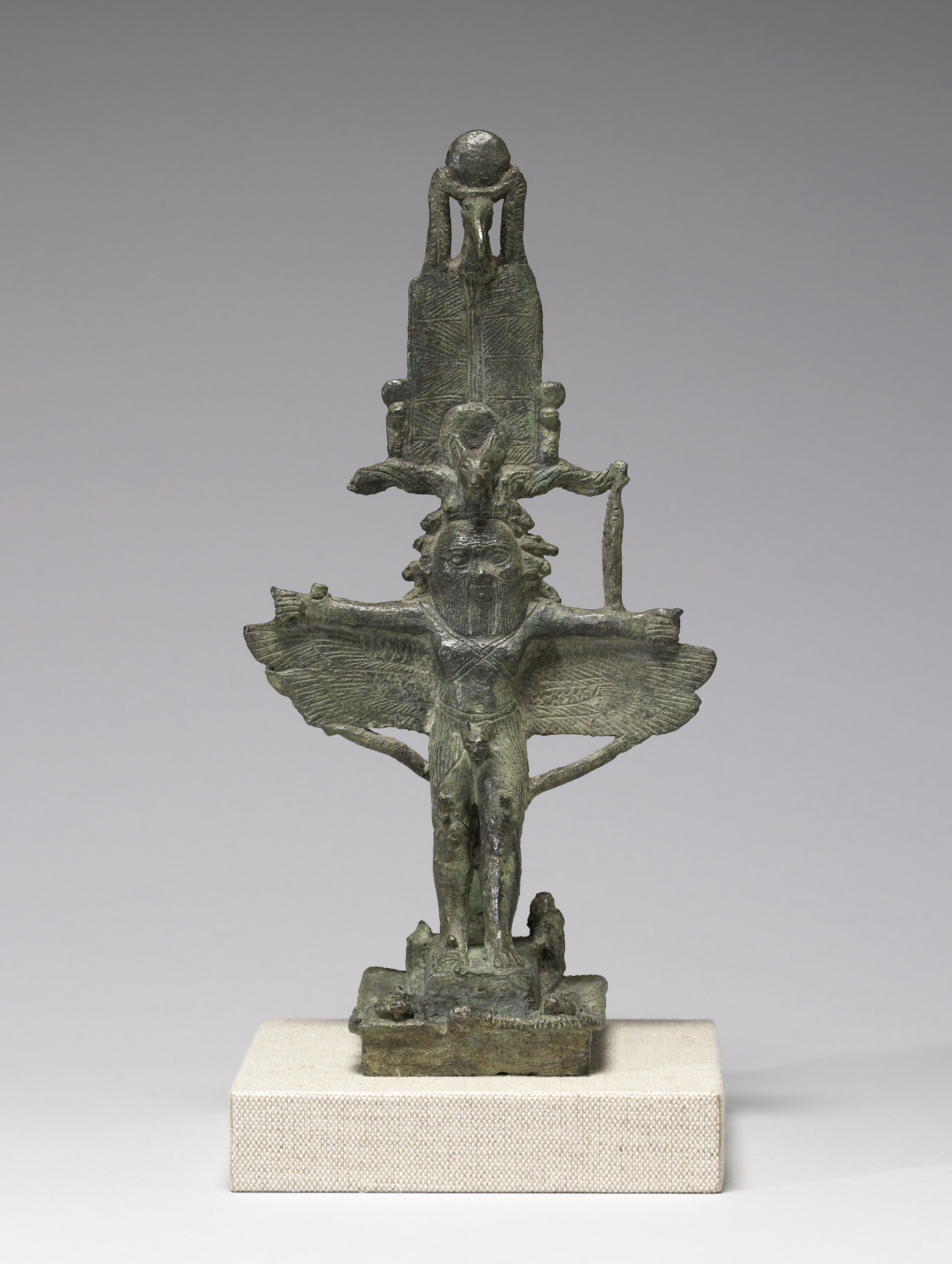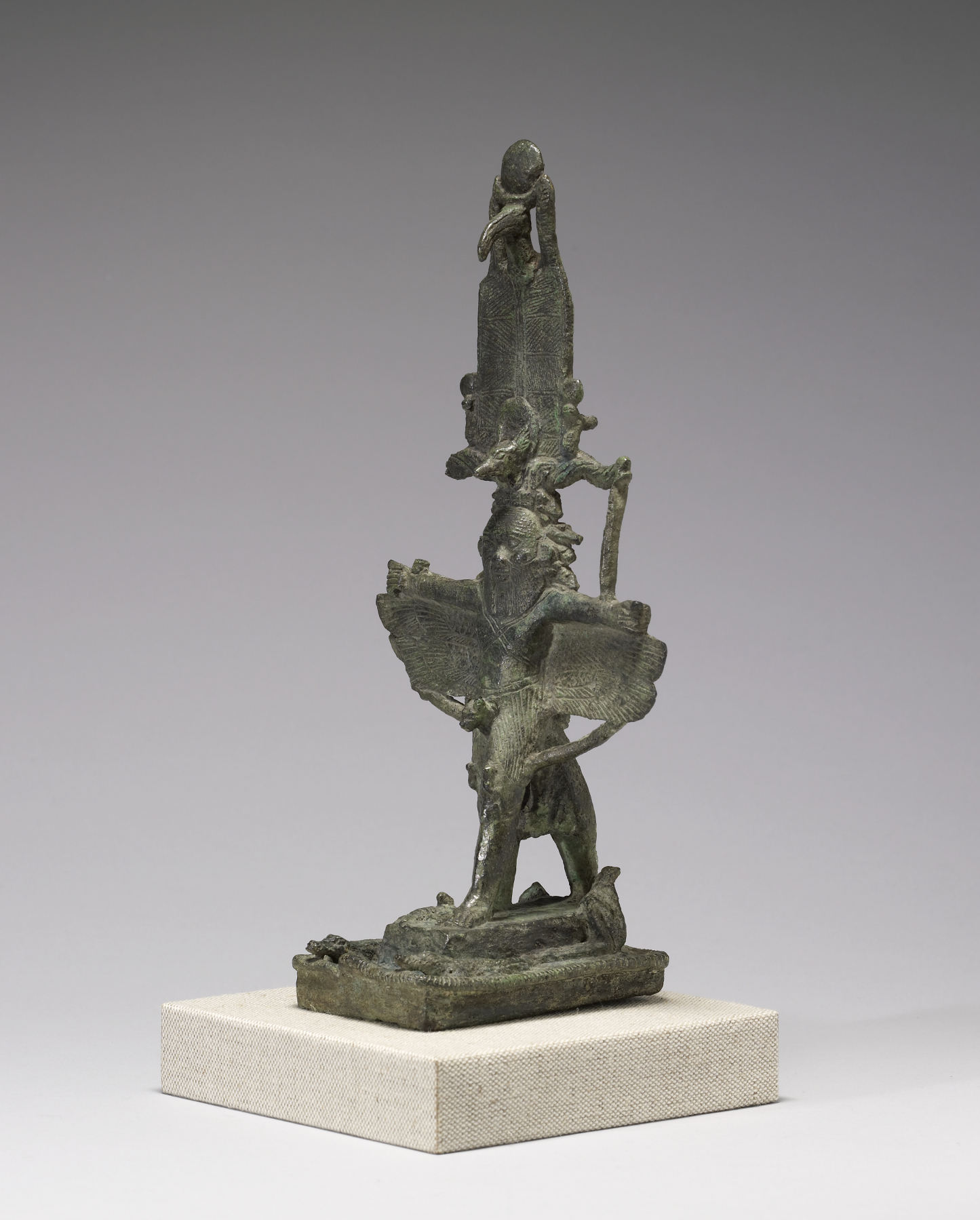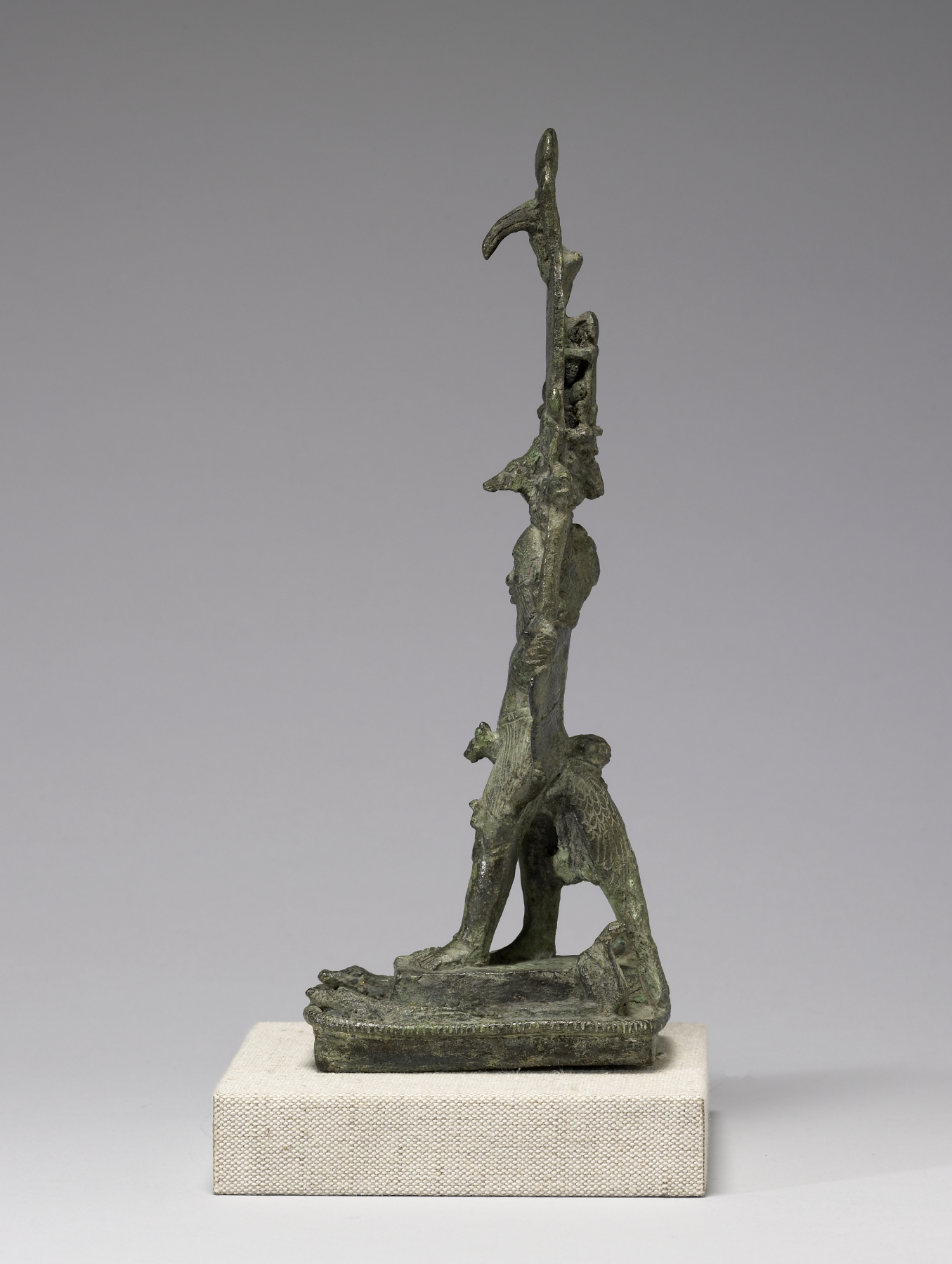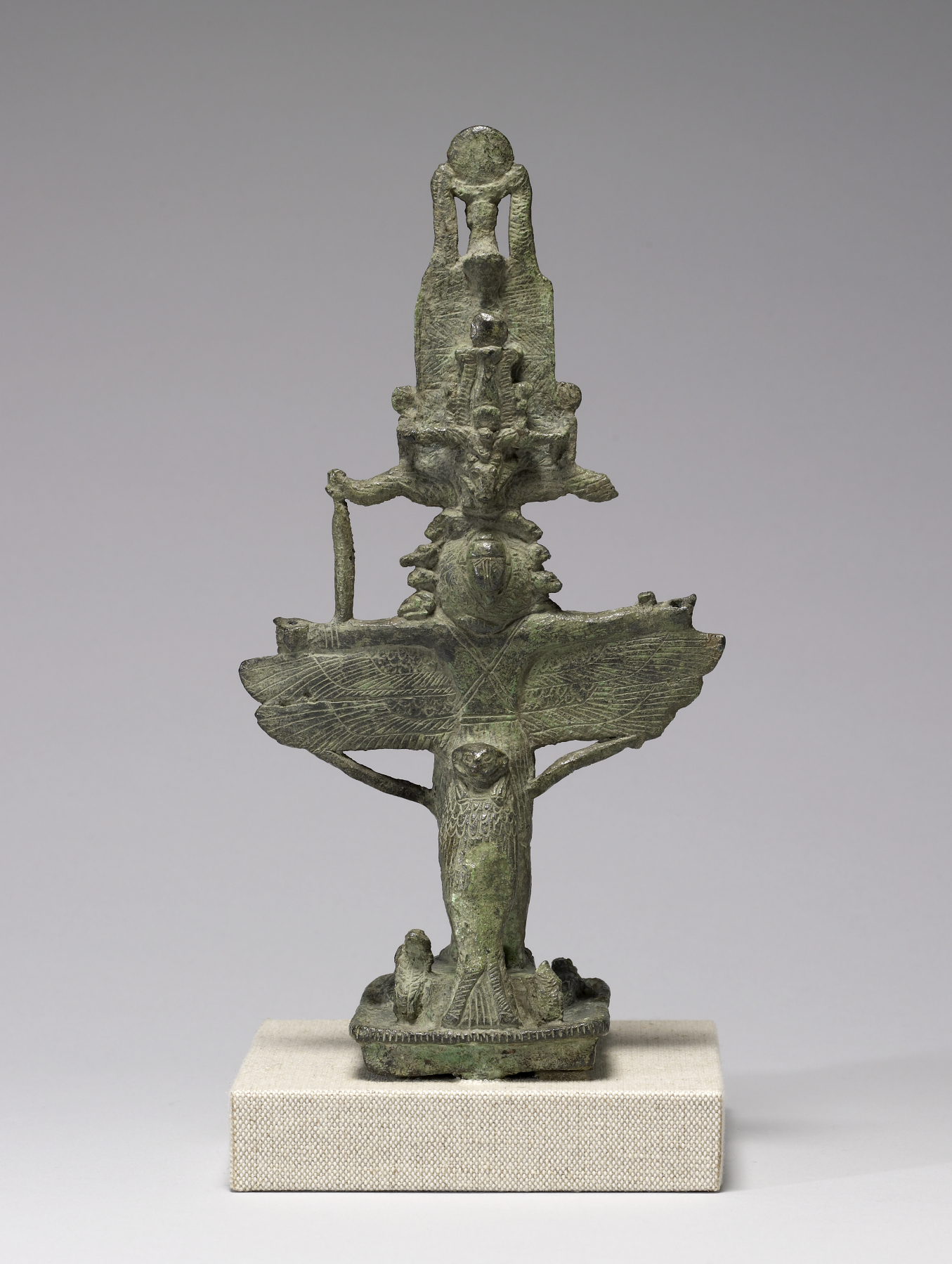Pantheistic Bes
(Ancient Egypt and Nubia )
This depicts a composite deity who has the attributes, and therefore the powers, of several different gods. The face of the god Bes, the twin plumes and ram horns of Amun's crown, the head of an ibis crowned by the crescent and full moon of Thoth, and several snakes and crocodiles can be seen. The wings and falcon tail are related to the sky god Horus, and the jackal Anubis. There are many more aspects which refer to a multitude of divine aspects. By incorporating these elements into a single figure, the statuette protected the owner from many evils.
Provenance
Provenance (from the French provenir, 'to come from/forth') is the chronology of the ownership, custody, or location of a historical object. Learn more about provenance at the Walters.
Henry Walters, Baltimore, 1931, by purchase; Walters Art Museum, 1931, by bequest.
Conservation
| Date | Description | Narrative |
|---|---|---|
| Examination | Examined and cleaned in preparation for loan. | |
| Examination | Examined, cleaned | |
| Treatment | Examined, cleaned | |
| Treatment | Examined and cleaned in preparation for loan | |
| 4/30/1957 | Treatment | cleaned |
| 1/27/2000 | Treatment | cleaned |
| 9/26/2011 | Treatment | loss compensation; stabilized; other |
Geographies
Egypt (Place of Origin)
Measurements
H: 9 15/16 × W: 5 1/8 × D:3 7/8 in. (25.2 × 13 × 9.9 cm); H with Tang: 10 1/2 × W: 5 1/8 × D: 3 7/8 in. (26.7 × 13 × 9.9 cm)
Credit Line
Acquired by Henry Walters, 1931
Location in Museum
Not on view
Accession Number
In libraries, galleries, museums, and archives, an accession number is a unique identifier assigned to each object in the collection.
In libraries, galleries, museums, and archives, an accession number is a unique identifier assigned to each object in the collection.
54.540








